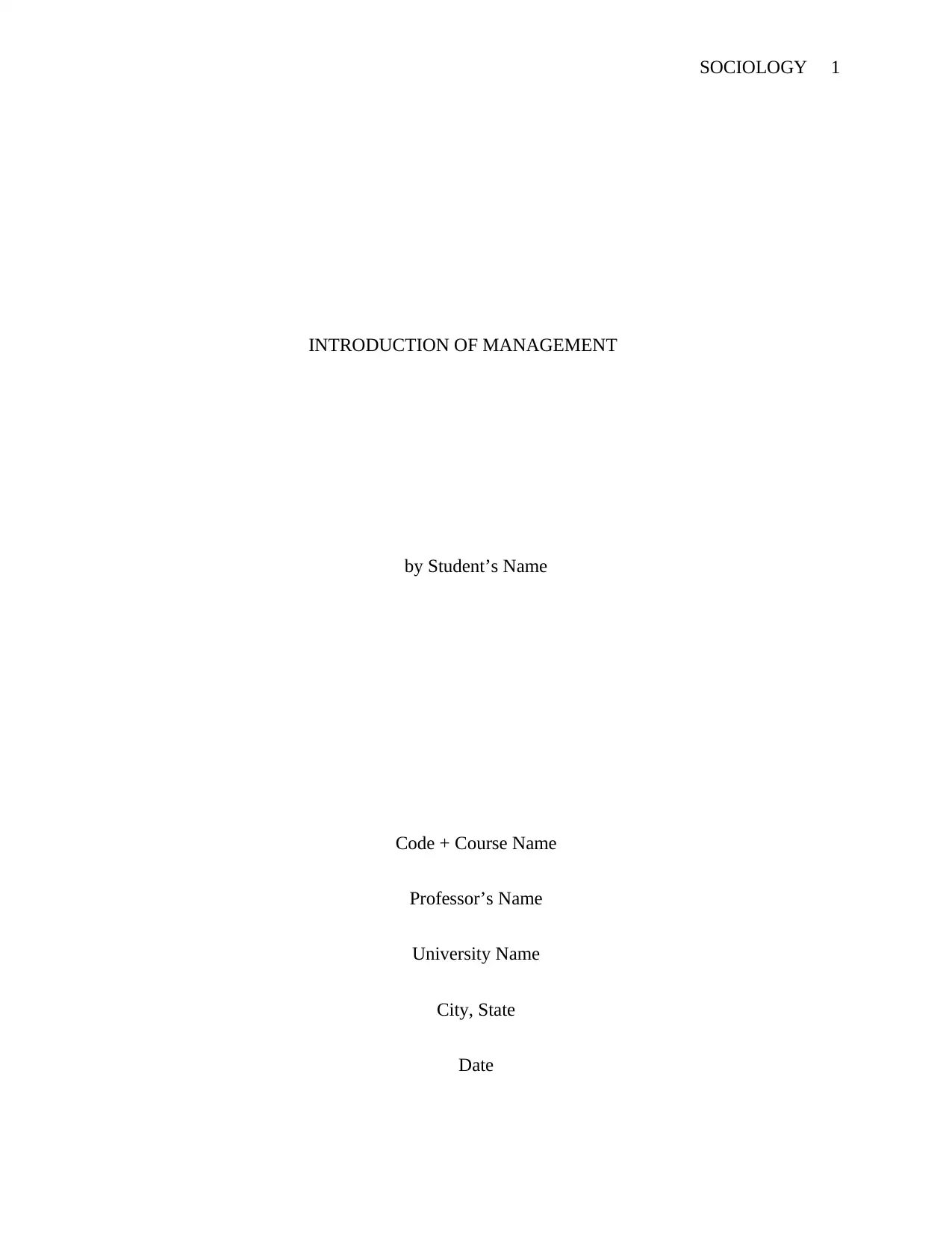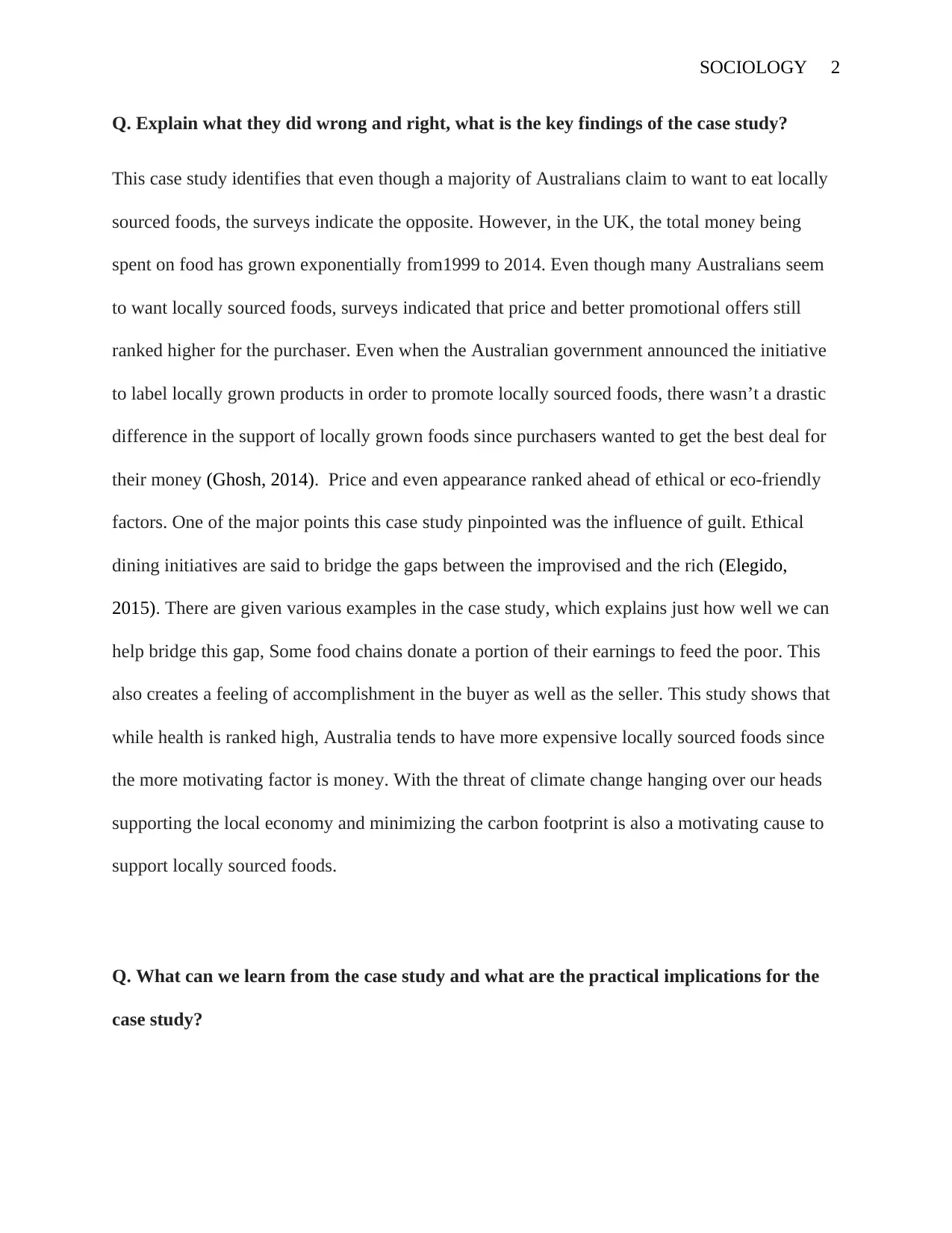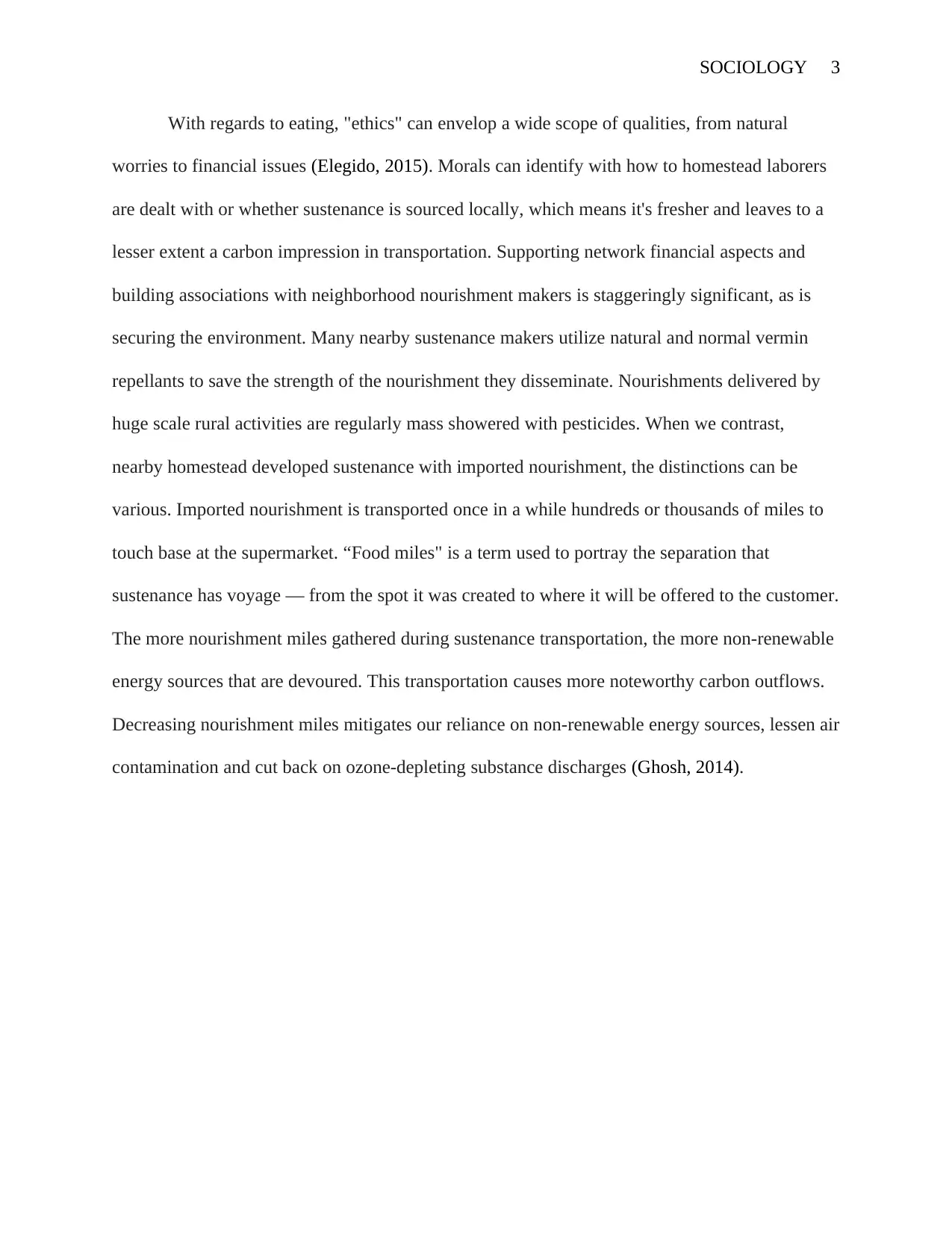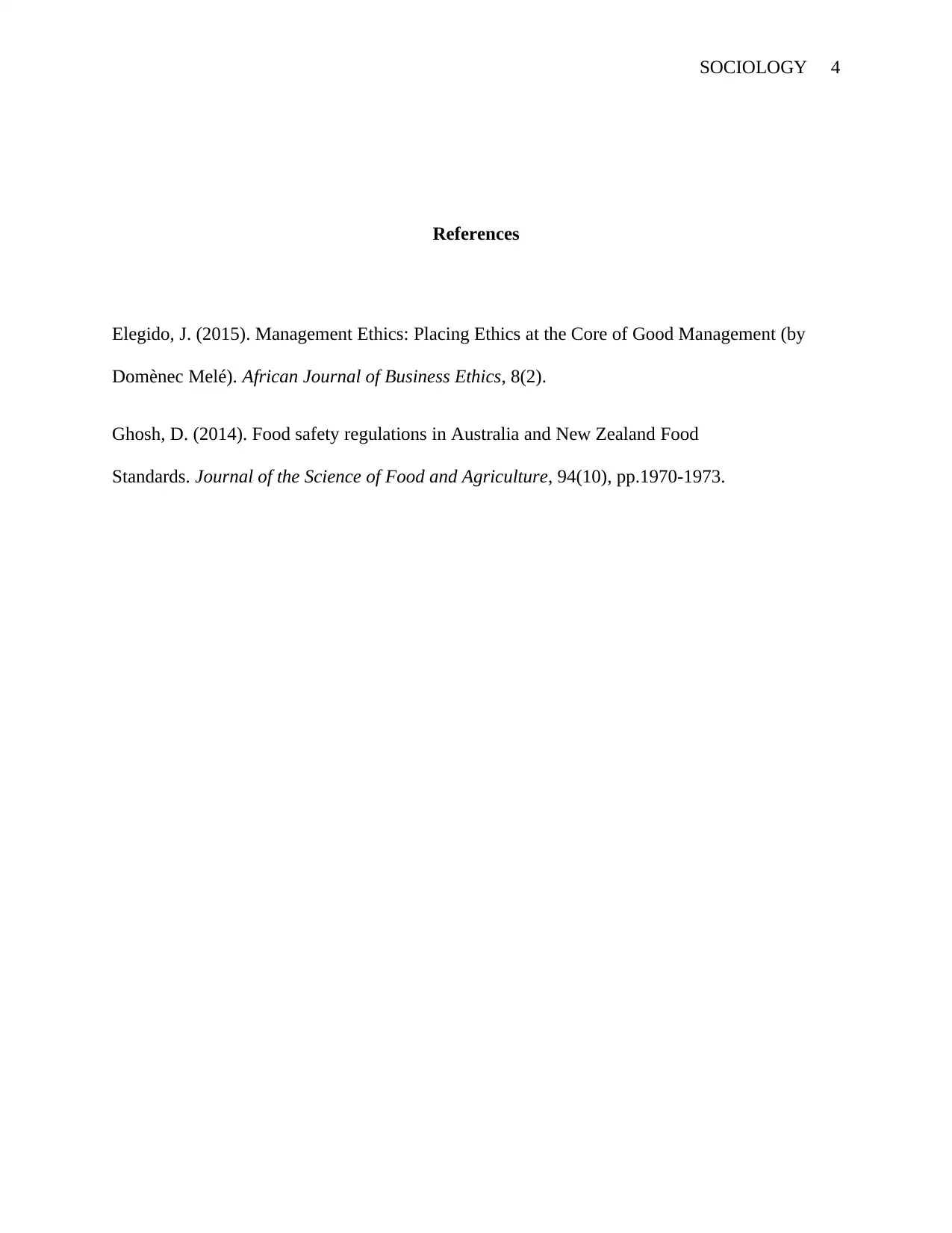Analysis of a Sociology Case Study on Local Food Consumption
VerifiedAdded on 2022/12/18
|4
|665
|40
Case Study
AI Summary
This case study analyzes consumer behavior regarding local food consumption, focusing on the Australian market. It examines the factors influencing consumer choices, such as price, ethics, and environmental concerns. The study highlights the tension between consumers' stated preferences for locally sourced food and their actual purchasing decisions, which are often driven by price considerations. The analysis explores the concept of "food miles" and the environmental impact of transporting food over long distances. The study also discusses the role of ethical considerations, such as fair labor practices and environmental sustainability, in shaping consumer choices. The case study references various sources to support its claims, including academic journals and reports. The study highlights the need for local food producers to promote the benefits of their products while also addressing consumer price sensitivities. It concludes with a discussion of the practical implications for the food industry and the importance of supporting local economies and reducing carbon footprints. The case study also highlights the importance of ethical considerations and how they can influence consumer behavior, ultimately leading to a more sustainable food system.
1 out of 4





![[object Object]](/_next/static/media/star-bottom.7253800d.svg)